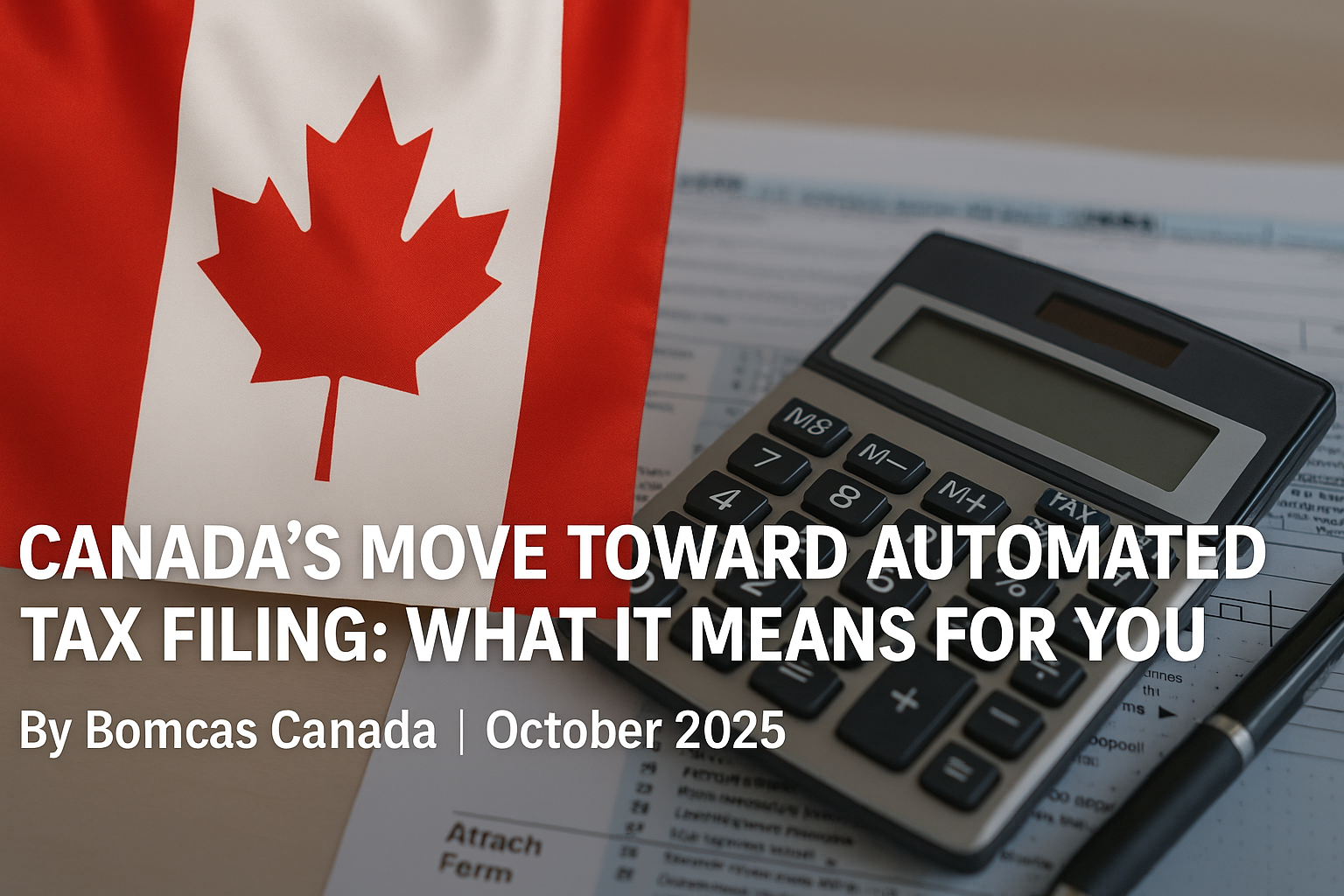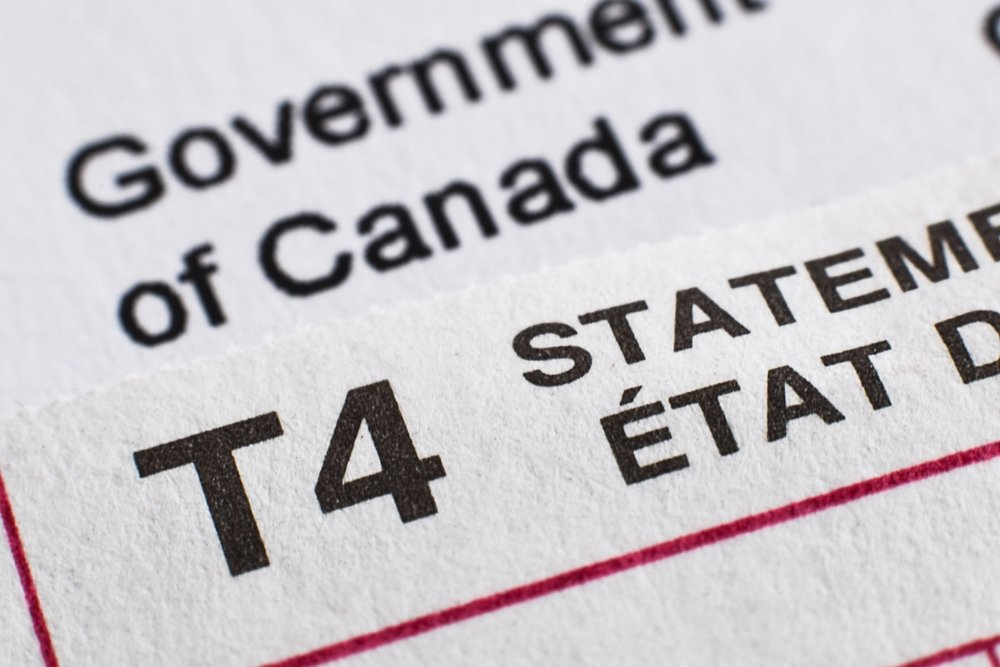In Canada, charitable donations offer more than just the satisfaction of giving back to society. They provide a valuable opportunity for taxpayers to reduce their income tax burden through the charitable donation tax credit. This incentive encourages individuals to support registered charities while benefiting from substantial tax breaks. Understanding how to maximize this credit can lead to significant savings on one’s tax return, making it a win-win situation for both donors and charitable organizations.
The charitable donation tax credit in Canada is a complex system that combines federal and provincial rates. To make the most of this tax incentive, individuals need to grasp the nuances of credit calculation, donation limits, and strategic giving plans. This article delves into the intricacies of the Canadian charitable donation tax credit, exploring federal and provincial rates, methods to optimize tax savings, and common pitfalls to avoid. By following these insights, taxpayers can enhance their charitable contributions while minimizing their tax liability.
Understanding Charitable Donation Tax Credits in Canada
Charitable donation tax credits in Canada serve as a powerful incentive for individuals and corporations to support registered charities and other qualified donees. These credits have an impact on reducing the donor’s tax liability, effectively lowering the amount of taxes they pay. This system allows taxpayers to support causes they care about while simultaneously benefiting from a tax break.
What are charitable donation tax credits?
Charitable donation tax credits are a type of tax incentive offered by the Canadian government to encourage philanthropic giving. When an individual makes a personal donation to a charitable organization, they receive a tax receipt. This receipt contains crucial information such as the donation amount, the charity’s name, and its registration number. Donors can use this tax receipt to claim their charitable donation tax credit on their tax return.
The value of the tax credit depends on the total amount of charitable donations made during the tax year and the donor’s income level. At the federal level, donors receive a credit of 15% on the first CAD 277.60 of donations. For donations exceeding this amount, the federal tax credit rate increases to 29%. High-income earners in the top tax bracket may qualify for a credit of up to 33% on a portion of their donations.
In addition to the federal tax credit, donors are eligible for provincial or territorial credits ranging from 4% to 25.75%. The rates vary depending on the specific province or territory. For example, in Alberta, the provincial tax credit is 10%.
Eligibility criteria for donations
To qualify for charitable donation tax credits, donations must meet specific criteria:
- Recipient organization: The donation must be made to a registered charity or other qualified donee recognized by the Canada Revenue Agency (CRA).
- Eligible organizations: Donations to registered charities, non-profit organizations, foundations, and certain religious organizations can make donors eligible for a tax credit. These organizations must meet the criteria set by the CRA to be considered qualified donees.
- Verification: The CRA provides a searchable online database that allows donors to confirm whether a charity is registered and eligible to issue official donation receipts. Alternatively, donors can determine the status of a registered charity by calling the CRA at 1-800-267-2384.
- Donation limits: In one year, donors can claim a maximum of 75% of their net income. However, the ability to carry forward charitable donation credits means that if donors reach the maximum claim amount in one year, they can claim the remaining amounts in subsequent years.
- Reporting: Donors must report their charitable donations on their electronic federal and provincial tax returns or on Schedule 9 of paper tax returns.
It’s important to note that not all donations made to charities are eligible for tax receipts. Some organizations have specific requirements for issuing receipts, while others may not issue them at all. To ensure eligibility for claiming donations on tax returns, it’s advisable to check with the charity beforehand and inquire about any exceptions or conditions.
Donors should also be cautious of donation schemes. Before making a donation, it’s recommended to check the CRA website for tips to avoid fraud and ensure the legitimacy of the charitable organization.
By understanding the intricacies of charitable donation tax credits in Canada, donors can make informed decisions about their giving strategies and maximize the benefits of their philanthropic efforts while supporting causes they care about.
Federal Charitable Donation Tax Credit Rates
The federal charitable donation tax credit in Canada offers significant incentives for individuals to support registered charities and qualified donees. This system has a two-tiered structure, with different rates applying to donations up to and over a specific threshold.
Credit rates for donations up to $200
For the first CAD 277.60 of charitable donations, the federal tax credit rate is 15%. This means that if a taxpayer claims CAD 277.60 in charitable donations, they will receive a refund of CAD 41.64. This initial tier encourages Canadians to make charitable contributions, even if they are relatively small.
Credit rates for donations over $200
The tax credit rate increases substantially for donations exceeding CAD 277.60. For amounts above this threshold, the federal tax credit rate jumps to 29%. This higher rate serves as a strong incentive for larger donations.
However, the system becomes more complex for high-income earners. The federal government introduced legislative proposals on December 7, 2015, which took effect in the 2016 taxation year. These proposals provide a 33% tax credit rate for donations over CAD 277.60, but only to the extent that the taxpayer has taxable income that attracts tax at the 33% personal income tax rate. This means that individuals in the top tax bracket can benefit from an even higher credit rate on a portion of their donations.
To illustrate how this system works, let’s consider an example:
If a taxpayer donates CAD 694.00 in a calendar year, the tax credit calculation would be as follows:
- The first CAD 277.60 would be eligible for a 15% refund (15% x CAD 277.60 = CAD 41.64)
- The remaining CAD 416.40 would be eligible for a 29% refund (29% x CAD 416.40 = CAD 120.76)
- The total federal tax credit would be CAD 162.40
For a high-income earner in the top tax bracket (33%), the calculation would be slightly different:
- The first CAD 277.60 would still be eligible for a 15% refund (CAD 41.64)
- The remaining CAD 416.40 would be eligible for a 33% refund (33% x CAD 416.40 = CAD 137.41)
- The total federal tax credit would be CAD 179.05
It’s important to note that there are limits to the amount of charitable donations that can be claimed in a given year. The maximum donation credit that can be claimed is 75% of the taxpayer’s net income for the year. This limit ensures that the tax credit system remains sustainable while still providing substantial incentives for charitable giving.
Understanding these federal charitable donation tax credit rates can help Canadians maximize their tax benefits while supporting causes they care about. By strategically planning their donations, taxpayers can take full advantage of the higher credit rates for larger contributions, potentially increasing their overall tax savings.
Provincial and Territorial Tax Credit Rates
In addition to the federal charitable donation tax credit, Canadian taxpayers can benefit from provincial and territorial tax credits. These credits vary across the country, offering different rates and thresholds that can significantly impact the overall tax savings for donors.
Variations in provincial/territorial rates
The provincial and territorial tax credit rates for charitable donations in Canada follow a similar structure to the federal system, with different rates applying to donations up to and over CAD 277.60. However, the specific rates and calculations can vary considerably between jurisdictions.
For donations of CAD 277.60 or less, the provincial tax credit rates range from 19% to 75%. The lowest rate is found in Nunavut at 19%, while Alberta stands out with an exceptionally high rate of 75% for the first CAD 277.60 of donations. This high rate in Alberta is the result of a recent change implemented through Private Member’s Bill 202, which received Royal Assent in late 2022 and took effect on January 1, 2023.
For donations exceeding CAD 277.60, the provincial tax credit rates generally increase, ranging from 40.5% to 50.8%. Newfoundland & Labrador has the highest rate at 50.8%, while Nunavut has the lowest at 40.5%. It’s important to note that some provinces have unique calculations or additional tiers:
- Ontario uses a rate of 11.16% for donations over CAD 277.60, which can increase to 17.41% for high-income earners due to surtaxes.
- Quebec employs a middle tax rate of 20% for the first CAD 277.60 of donations, rather than its lowest tax rate of 16%.
- Prince Edward Island has an effective tax rate of 18.37% for donations over CAD 277.60 for taxable incomes over CAD 140,332.37 in 2023, due to a surtax that will be eliminated in 2024.
How to calculate combined federal and provincial credits
To maximize tax savings, donors should consider both federal and provincial tax credits when calculating their total charitable donation tax credit. The combined credit can lead to substantial tax reductions, making charitable giving even more attractive from a financial perspective.
To calculate the combined credit:
- Determine the federal credit:
- 15% on the first CAD 277.60 of donations
- 29% on donations exceeding CAD 277.60 (33% for high-income earners in the top tax bracket)
- Add the applicable provincial or territorial credit based on the donor’s residence and the donation amount.
- Sum the federal and provincial/territorial credits to get the total tax credit.
For example, a donor in British Columbia who contributes CAD 694.00 would calculate their credit as follows:
Federal credit:
- First CAD 277.60 at 15% = CAD 41.64
- Remaining CAD 416.40 at 29% = CAD 120.76
Provincial credit (British Columbia):
- First CAD 277.60 at 20.06% = CAD 55.69
- Remaining CAD 416.40 at 45.8% = CAD 190.71
Total combined credit: CAD 41.64 + CAD 120.76 + CAD 55.69 + CAD 190.71 = CAD 408.80
It’s crucial to note that the maximum donation credit that can be claimed in a given year is generally limited to 75% of the taxpayer’s net income. However, Quebec has eliminated this limitation for the 2016 and later taxation years.
To assist taxpayers in estimating their potential tax savings, the Canada Revenue Agency provides a Charitable Donation Calculator. This tool takes into account both federal and provincial rates, offering a comprehensive view of the after-tax cost of charitable donations based on the donor’s province of residence and donation amount.
Maximizing Your Tax Credit Through Strategic Donations
Strategic planning of charitable donations can significantly enhance the tax benefits for Canadian taxpayers. By understanding the nuances of the charitable donation tax credit system, individuals can maximize their tax savings while supporting their chosen causes.
Timing your donations
The timing of charitable contributions has a substantial impact on tax credits. Making donations at the end of the tax year ensures that the full amount is counted towards the current year’s taxes. This approach allows taxpayers to have a clearer picture of their annual income and adjust their donation amount accordingly to optimize their tax credit.
For instance, if an individual anticipates being in a higher tax bracket in the current year, making larger donations before the year-end can result in a more substantial tax credit. Conversely, if a lower income is expected in the following year, it might be beneficial to defer some donations to that year to maximize the credit’s value.
Grouping donations across years
One effective strategy to maximize tax credits is to group donations across multiple years. This approach, often referred to as “bunching,” can lead to a higher tax credit by exceeding the standard deduction threshold. Here’s how it works:
- Accumulate donations: Instead of making smaller annual donations, taxpayers can accumulate their charitable contributions over several years.
- Claim in a single year: By claiming these accumulated donations in one specific year, individuals can benefit from the higher tax credit rate applied to donations exceeding CAD 277.60.
- Carry forward option: Donations can be carried forward for up to five years. This flexibility allows taxpayers to strategically time their claims for maximum benefit.
To illustrate, consider the following example:
Year 1-4: Accumulate donations without claiming
Year 5: Claim all accumulated donations
This strategy ensures that a larger portion of the donations benefits from the higher credit rate (29% federally for amounts over CAD 277.60), potentially resulting in significant tax savings.
To track previous claims, taxpayers can use the CRA’s My Account online service. By accessing the Tax Returns tab, individuals can view their returns from previous years. For tax years prior to 2019, check line 349 on the T1 General tax returns. For 2019 onward, refer to line 34900 of the Income Tax and Benefit returns.
It’s important to note that the maximum donation credit that can be claimed in a given year is generally limited to 75% of the taxpayer’s net income. However, this limitation has been eliminated in Quebec for the 2016 and later taxation years.
By employing these strategic approaches to charitable giving, Canadian taxpayers can maximize their tax credits while making a meaningful impact through their donations. It’s advisable to consult with a tax professional to develop a personalized strategy that aligns with individual financial circumstances and philanthropic goals.
Claiming Donations as a Couple
For married couples in Canada, combining charitable donations can lead to significant tax advantages. By pooling their contributions and strategically claiming them on their tax returns, couples can maximize their tax savings and potentially increase their overall charitable impact.
Pooling donations with your spouse
When married or in a common-law partnership, couples have the option to pool their charitable donations and claim them together on a single tax return. This approach offers several benefits:
- Increased tax credit: By combining donations, couples can take advantage of the higher credit rate (29% federally) for amounts exceeding CAD 277.60.
- Simplified filing: Pooling donations allows couples to report all charitable contributions on a single Schedule A form, streamlining the tax filing process.
- Flexibility in claiming: Couples can choose which spouse claims the combined donations, potentially optimizing their tax savings based on individual circumstances.
To illustrate the benefits of pooling donations, consider the following example:
Penny and Jim each donated CAD 277.60 to their local animal shelter. If they claim their donations separately, they would each receive a federal credit of 15%, resulting in a total credit of CAD 83.28 (CAD 41.64 x 2). However, by combining their donations, they can claim a total of CAD 555.20, which yields a federal credit of CAD 122.14 (15% on the first CAD 277.60 and 29% on the remaining CAD 277.60). This strategy results in an additional CAD 38.86 in tax savings.
Optimizing claims between partners
To make the most of their charitable donations, couples should consider several factors when deciding how to claim their contributions:
- Income levels: If one spouse has a significantly higher income and is in a higher tax bracket, it may be more beneficial for that spouse to claim a larger portion of the donations. This approach can result in a higher overall tax credit due to the progressive nature of tax rates.
- Deduction limits: In Canada, individuals can claim charitable donations up to 75% of their net income in a given year. If one spouse has reached this limit, the other spouse can claim the remaining donations to ensure the full amount is deducted.
- Other credits and deductions: Consider how claiming charitable donations might interact with other tax credits or deductions each spouse may be eligible for. In some cases, it may be advantageous to split the claims to optimize overall tax savings.
- Carry-forward strategy: Unused donation tax credits can be carried forward for up to five years. Couples may choose to strategically carry forward some donations to future years when they anticipate being in a higher tax bracket or having a larger tax liability.
To optimize claims, couples should keep detailed records of their charitable contributions, including which partner made each donation. This information will help them make informed decisions when filing their taxes.
It’s important to note that while couples can pool their donations, they must file separate tax returns. The decision on how to allocate the combined donations between partners should be made based on their unique financial situation and with the goal of maximizing their overall tax benefits.
By carefully considering these factors and working together to optimize their charitable donation claims, couples can enhance their tax savings while supporting causes they care about. This strategic approach not only benefits the couple financially but also encourages increased charitable giving, as the tax incentives make larger donations more accessible.
Donating Non-Cash Items
Charitable giving extends beyond monetary contributions, encompassing a wide range of non-cash items that can significantly benefit charitable organizations. This form of donation not only supports worthy causes but also offers potential tax advantages for donors. However, the process of donating non-cash items involves specific considerations and requirements that donors should be aware of to ensure their contributions are properly recognized and eligible for tax benefits.
Eligible Non-Cash Donations
Non-cash donations, also known as gifts-in-kind, can include a diverse array of items. Eligible donations may comprise clothing, furniture, household goods, electronics, books, vehicles, and even real estate. The key criterion for eligibility is that these items must be in good condition and suitable for use by the charitable organization. This ensures that the donations have practical value and can effectively support the charity’s mission.
It’s crucial to understand that not all valuable items donated to a registered charity automatically qualify for a tax receipt. The Income Tax Act stipulates specific regulations that govern the issuance of official donation receipts for income tax purposes. To be considered a qualifying gift, the donation must meet several essential criteria:
- Voluntary transfer: The donation must be made without any legal or contractual obligation.
- Complete transfer: Ownership must be fully transferred to the charity, including all necessary legal steps.
- Property: The donation must be a tangible asset, not a service.
- Intention to make a gift: There should be a clear donative intent to benefit the charity without expecting significant advantages in return.
Valuation and Documentation Requirements
Proper valuation and documentation are critical aspects of donating non-cash items, ensuring that both donors and charities comply with tax regulations and accurately report the value of contributions.
Fair Market Value (FMV)
The concept of Fair Market Value (FMV) is central to evaluating non-cash gifts. FMV represents the highest price that a piece of property could command in an open, unrestricted market, assuming both the buyer and seller are willing participants with relevant knowledge and act independently. Accurate determination of FMV has an impact on the eligible amount for receipting and the tax benefits a donor can claim.
Valuation Guidelines
- For items valued under CAD 1388.00:
- A knowledgeable individual within the charity can assess the value.
- The assessment should be well-documented and reasonable.
- For items valued over CAD 1388.00:
- It is strongly recommended to obtain a third-party appraisal.
- The appraiser’s details should be included on the receipt.
- For donations valued at CAD 694.00 or more:
- A qualified appraisal is required by tax authorities.
Documentation Requirements
Proper documentation is essential for claiming non-cash donations on tax returns. Donors should obtain:
- A receipt from the charitable organization that includes:
- A description of the donated items
- Their estimated value
- For donations exceeding CAD 694.00 in total value:
- Form 8283 (Noncash Charitable Contributions) may need to be filed
It’s important to note that if the fair market value of a gift-in-kind or an associated benefit cannot be calculated, charitable organizations cannot issue an official donation receipt. This underscores the importance of accurate valuation and proper documentation.
By understanding these requirements and guidelines, donors can ensure their non-cash contributions are properly recognized and eligible for tax benefits, while charitable organizations can maintain compliance with regulatory standards. This process not only supports the important work of charities but also provides donors with the opportunity to make meaningful contributions beyond monetary gifts.
Common Mistakes to Avoid When Claiming Donation Credits
Claiming charitable donation tax credits in Canada can be a complex process, and taxpayers should be aware of potential pitfalls that could lead to issues with the Canada Revenue Agency (CRA). By understanding and avoiding these common mistakes, individuals can ensure they maximize their tax benefits while remaining compliant with regulations.
Missing documentation
One of the most critical errors taxpayers make when claiming donation credits is failing to maintain proper documentation. The CRA has strict requirements for the information that must be included on charitable donation receipts, as outlined in Regulation 3501 of the Income Tax Regulations. To avoid issues, donors should ensure their receipts contain the following essential elements:
- The name and address of the donor, including the individual’s first name and initial
- The name and address of the charity
- The registration number assigned by the CRA
- The serial number of the receipt
- The place or locality where the receipt was issued
- The name and internet site of the CRA
- The date of the donation
It’s crucial to note that the responsibility for ensuring all requirements are met falls on the donor, even if they must rely on documents obtained from a third-party charity. Taxpayers should keep their donation receipts for at least five years after filing their tax returns, as the CRA may request follow-up information.
If a donor loses their charitable receipt, they should contact the charity to obtain a replacement. However, it’s essential to verify that the replacement receipt meets all the necessary requirements before claiming the donation.
Exceeding claim limits
Another common mistake is exceeding the allowable claim limits for charitable donations. The CRA has established specific limits on the amount of charitable contributions that can be claimed as deductions, based on the taxpayer’s income and the type of organization receiving the donation.
In general, individuals can claim a maximum of 75% of their net income in charitable donations in a single year. However, it’s important to note that this limit has been eliminated in Quebec for the 2016 and later taxation years.
To avoid exceeding claim limits, taxpayers should consider the following strategies:
- Carry forward donations: Unused donation tax credits can be carried forward for up to five years. This allows individuals to strategically time their claims for maximum benefit.
- Group donations across years: By accumulating donations over several years and claiming them in a single year, taxpayers can potentially benefit from higher tax credit rates applied to donations exceeding CAD 277.60.
- Optimize claims between partners: Married or common-law partners can pool their donations and strategically claim them on a single tax return to maximize their tax savings.
By being mindful of these common mistakes and taking proactive steps to avoid them, Canadian taxpayers can ensure they receive the full benefits of their charitable contributions while maintaining compliance with CRA regulations. It’s always advisable to consult with a tax professional when dealing with complex donation scenarios or when unsure about specific claim limits and requirements.










 View Our Location
View Our Location





 181 Meadowview Bay, Sherwood Park, AB T8H 1P7, Canada (Online Clients Only)
181 Meadowview Bay, Sherwood Park, AB T8H 1P7, Canada (Online Clients Only)